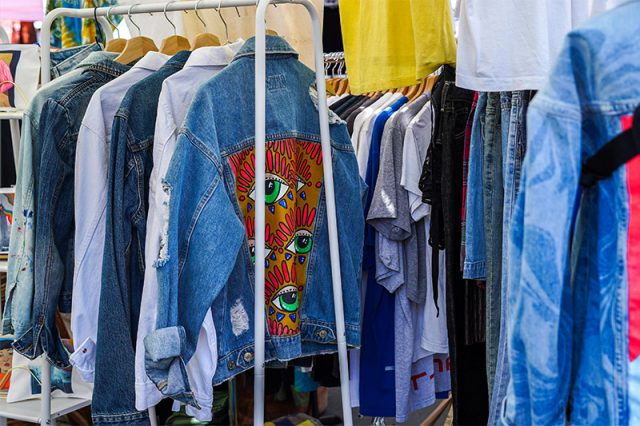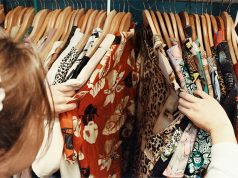In theory, apps for selling secondhand clothes such as Vinted, Depop, ThredUp and Schpock offer an opportunity to be both thrifty and fashionable. Good news for shoppers worried about rising costs and the sustainability of buying new clothes.
Secondhand markets like these, and their in-person iterations like charity shops, have long been lauded as a more savvy, ethical, and environmentally sustainable shopping choice. But our research has found these markets mask the issues caused by our consumption. They offer only individualized, piecemeal solutions to the vast global problem of waste.
Pundits in the business world enthuse about the “circular economy” created by apps which market “pre-loved” garments as a means of extending the lives of clothing and other consumer goods. As with other online resale markets such as Facebook Marketplace and eBay, these apps are firmly situated within the commonsense understanding of the circular economy, as they enable unwanted goods to move on within the system, rather than being consigned to the bin.
A truly circular economy ought to not only recycle goods, but also prevent the future production of waste. And by that measure, clothing markets are failing spectacularly. According to a report by the Ellen MacArthur Foundation, by 2030 we will produce more than 100 million tonnes of new clothing each year, contributing to climate change more than international flights and shipping combined. Secondhand reselling is failing to make a dent in the unfathomable scale of production in the international textiles market.
Our critique of secondhand spaces suggests a few reasons for this. First, buying and selling secondhand gets talked about and even advertised as what good, clever, thrifty people do, especially under rising costs of living. Using a reselling app, or donating to and buying from charity shops, creates a “warm glow” that offsets the guilt of buying something new.
But most significantly, secondhand markets are built to increase consumption, not cut it back. Charity shops, for example, under increasing pressure to be profitable, have to take on more professionalised and “for-profit” merchandising habits.
Even companies that deal in luxury items such as watches and jewellery have embraced the popularity of secondhand shopping as it complements their market and means future consumers can access their goods.
Most secondhand clothes still end up in the global south
The secondhand myth of “shopping for good” disguises a mountain of problems.
Only roughly 10% to 20% of items donated to charity shops are suitable for sale. The rest are either recycled or sent for resale in countries in the global south, resulting in a multi-billion pound industry propped up predominantly by charitable organizations. Most shoppers and people who donate their clothes don’t know this is happening.
This redistribution of poor-quality unsold items from the west to wholesalers in places such as India, Senegal and Nigeria can undercut local manufacturers and put traders out of business. The sheer volume of textiles means that often huge swaths are dumped or, worse, openly burned on the streets, polluting the air with chemicals. Meanwhile the breakdown of (mostly cheap synthetic) clothing pollutes waterways with microplastics and releases toxic gases.
The hazardous work of picking through such waste for the purpose of recycling is mostly undertaken by women and people in marginalised groups, as shown in the short film Unravel. The film, based on anthropological work by the academic Lucy Norris documents the labour conditions of women in northern India who risk their health to shred and recycle unwanted western clothing back into yarn.
Many of the “solutions” that promise to deal with waste from the west share the same dynamics as the maligned fast fashion industries that enabled disasters such as that which took place at Rana Plaza: exploiting vulnerable groups (including children) and risking the health and safety of workers. While secondhand consumption offers a convenient solution for the problem of accumulation, recent celebrations of the “circular economy” only endorse the constant flow of commodities through our households, rather than prevent it.
Rather than the individualized solution offered by the secondhand market, we should instead consider collective approaches. This could involve demonstrating solidarity with and securing reparations for those disproportionately impacted by the harms of secondhand markets, for instance by supporting the OR Foundation in Ghana or The Association of Ragpickers in Bengal. It could involve making brands responsible for the full lifecycle of the things they create.
Ultimately, holding manufacturers and governments accountable for their environmental and humanitarian failings is the only viable solution to the international waste crisis.

Triona Fitton, Senior Lecturer in Sociology and Student Success, University of Kent and Alida Payson, Lecturer in Media and Cultural Studies , Cardiff University. This article is republished from The Conversation under a Creative Commons license. Read the original article.





